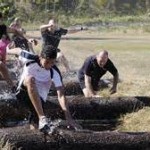Participate in a Race!
Competition doesn’t always have to be intense, anxiety-inducing and stressful. Racing can, in fact, be motivating, inspiring and fun! Not only does racing yield physical benefits, but many non-physical benefits as well. Here are 3 non-physical benefits of racing and why you shouldn’t automatically rule it out in your athletic journey:
Racing allows time alone with your thoughts. That’s right, if you’re always running here and there, racing allows a set period of time to RELAX, take in the view and gather your thoughts. Or simply blank your mind and don’t think about anything at all!
Racing can be FUN. Remember your care-free days of dashing around the playground at school, or racing through the park with friends? Unless you’re competing for sponsors or qualifications, racing can be pure, easy, adult-allowed FUN.
Racing feeds your spirit. Yes, competition is a great workout. However, racing will also feed your spirit as you witness the friendship among athletes who have just met, the encouragement one athlete offers to another, the support and genuine care volunteers give to competitors. Allow these actions to move you and feed your motivation.
 Subscribe
Subscribe






